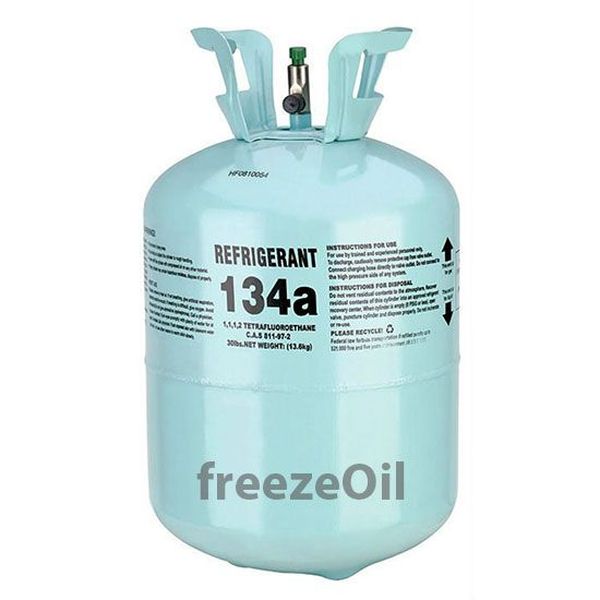A Full History of Refrigerants
- Category: Pics |
- 6 Jan, 2020 |
- Views: 1915 |

Ever since the dawn of man, we've done everything in our power to figure out how we can control our environment to fulfill even our most tedious of whims. One prominent kind of control we exert over the world around us is by changing the temperature of wherever we are to help us stay comfortable. Over time, we discovered novel substances that could be manipulated to quickly cool or heat the surrounding air, and then have that air delivered where we needed it to go. These substances were known as refrigerants. The name is pretty self-explanatory.
The Beginning of Modern Refrigeration
While there's some mention of refrigerant-like substances and devices being used starting in the mid-1700s, the systems we know and love today can be traced back to 1928 with a novel discovery by scientists known as Thomas Midgley, Albert Henne, and Robert McNary.
These compounds were known as chlorofluorocarbon (CFC) refrigerants, with one particular compound, R-22, quickly becoming the standard refrigerant of residential air conditioners for decades to come.
It took several decades before it was discovered that the chlorine constituent of these refrigerants had a very damaging effect on the ozone layer. It wouldn't be until 1987 with the passing of the Montreal Protocol that CFCs and their related HCFC compounds were meant to be phased out in favor of more environmentally conscious refrigeration options. The finalized 1988 version of the Montreal Protocol stated that all CFC/HCFC refrigerants be completely phased out by 2030. The reason why it was decided that these refrigerants be phased out slowly is that an outright ban on these substances would have resulted in widespread economic chaos, thanks to the ubiquity of their use. Essentially, no new CFC/HCFC devices were to be created or installed, but existing ones were allowed to go to the end of the lifespan.
Back to the Drawing Board
Now that chlorine-containing refrigerants were banned, the HVAC industry needed to find alternatives that didn't have a negative effect on the environment typical of CFCs. Earlier, the only focus when developing refrigerants was that they be effective, easy to transport, and non-toxic to human beings.
A new class of refrigerants was developed, known as hydrofluorocarbon (HFC) refrigerants. Of these, the refrigerant R-410a, as well as R-134a, rose to prominence. Many different forms of R-134a exist, with 134a refrigerant being a good example of a standard refrigerant formula with a few performance-enhancing extras thrown in for good measure.
Out With the Old, In With the New
Now that these new refrigerants that lacked the ozone-depleting qualities of earlier compounds had been developed, the EPA in the United States worked to oversee the phase-out period. It would be in 2010 that the EPA would be instrumental in the implementation of a ban on the production, as well as the import of any R-22 refrigerant. This meant that many air-conditioning manufacturers were now scrambling for a way to retrofit existing systems to be able to take R-410a refrigerant since existing systems wouldn't be able to be recharged after a purge. Quickly, R-410a became the standard refrigerant among HVAC firms in the USA with little regard for their past reliance on R-22.
R-410a Isn't Without Its Issues
Does this mean that R-410a is here to stay? Well, much in the same way that the effects of R-22 came out over time that it has the effects of R-410a. While still not damaging to the ozone layer, the production and use of R-410a has been discovered to have serious implications, as far as being a contributor to global warming is concerned. The HVAC industry is inextricably linked to scientific developments in the realm of refrigerants, as well as ever-changing environmental legislation.
The latest amendment to the Montreal Protocol is calling for R-410a to be phased down in a similar way that R-22 was during its inception. This phase-down is expected to begin sometime in the 2020s.
What's the Future of Refrigerants?
One novel refrigerant known as R-32 is poised to take over R-410a's place in the overall refrigeration landscape. Compared to R-410a, R-32 has only one-third of the global warming potential. A few consumer-level air conditioning systems already use R-32, and various codebooks are being prepped for the introduction of R-32 to the mainstream.
What kind of changes to expect in the overall refrigerant landscape is largely dependent on how quickly and decisively legislation will be introduced to phase out more environmentally damaging compounds. The Montreal Protocol allows a degree of autonomy in how each individual country chooses to accomplish their phase-down goals, so there's usually a period in which one or two countries that may or may not have already eliminated their use of one refrigerant still supplies it to another for a period of time. Policy-makers wish for a balanced approach that consistently reduces the number of devices using less than ideal refrigerants with minimal trauma to the established industry.
Leaks within HVAC systems are becoming more and more infrequent, with some systems having many different fail-safes to capture lost refrigerant before it can come into contact with the environment. Because of these developments, the phase-down of R-410a may happen at a much slower pace than the overall phase-out of R-22 back in 1988.
Conclusion
From 1928 up to this day, the most significant driver in refrigerant technology would have to be managing the environmental impact of using these compounds. Initially, it was just a matter of making convenient refrigerants that would get the job done without giving anyone a headache, but now, the need for ecologically sustainable compounds are giving manufacturers a different kind of headache to worry about. Whenever a new refrigerant is phased-in, new cooling oils need to be developed that are compatible with them, and entire systems need to be reconfigured to make the best use of whatever new refrigerant has been chosen. As long as manufacturers and producers are given enough time to slowly convert to the new compound, there will be little turbulence felt by end-users, and most people can expect to use their devices until their usual period of use is over.

